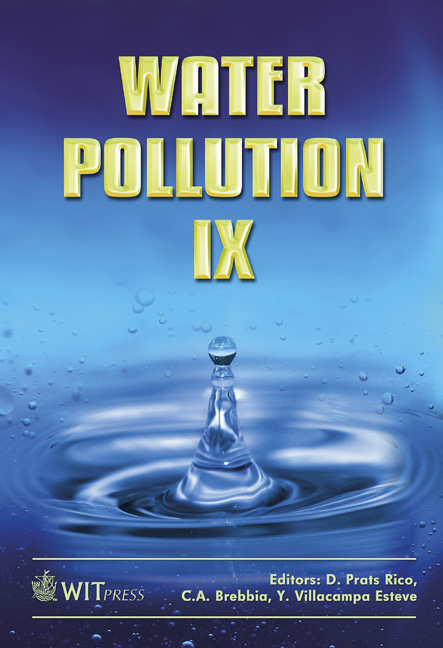Theoretical Evaluation Of Substituted Polycyclic Aromatic Hydrocarbons As Emerging Pollutant Phototoxins
Price
Free (open access)
Transaction
Volume
111
Pages
9
Page Range
329 - 337
Published
2008
Size
358 kb
Paper DOI
10.2495/WP080321
Copyright
WIT Press
Author(s)
K. Rowberg, N. Nataraj, W. Saroian & L. Kang
Abstract
Phototoxicity potential was predicted for 88 substituted PAHs. The geometry of all PAHs was optimized and the molecular orbital energies were calculated using AM1 Hamiltonian. The highest occupied molecular orbital energy (EHOMO) and the lowest unoccupied molecular orbital energy (ELUMO) were used to calculate the energy gap (EHOMO−ELUMO). The energy gap was used to predict phototoxicity for chloro-, bromo-, nitro- and methyl-substituted PAHs. Of the 88 compounds in the study, only nitro substituents on carbazole were predicted to induce phototoxicity of the nonphototoxic parent. Keywords: polycyclic aromatic hydrocarbons, PAH, phototoxicity, HOMOLUMO gap, emerging pollutants. 1 Introduction Polycyclic aromatic hydrocarbons (PAHs) are planar, nonpolar, semi-volatile chemical compounds that are composed of two or more fused aromatic rings. PAHs originate from point sources (e.g. oil spills, industrial processes [1] and fossil fuel combustion) or non-point source pollutants (e.g. atmospheric deposition, road runoff, forest fires, and volcanoes). Rain may move PAHs deposited on the soil to the groundwater. Although PAHs have low aqueous solubility, they readily adsorb on sediment of the groundwater. Phase equilibria between sediment and water and mass transfer controls the release of PAHs from nonaqueous phase liquids or sediment into the aqueous phase. Although PAHs are formed primarily as by-products of carbonaceous fuel consumption, PAHs
Keywords
polycyclic aromatic hydrocarbons, PAH, phototoxicity, HOMOLUMO gap, emerging pollutants.





